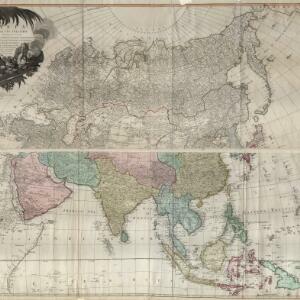
China, Birmah and Anam
1835
Cambodia, Laos, Myanmar, Thailand, Vietnam, Philippines
Coloured borders are used on this map to divide mainland Southeast Asia into empires and kingdoms. Mountains, rivers and major settlements are shown in land, with islands, shoals and reefs marked in the South China Sea.


















